Migration to Australia in the 1800s
Students examine significant events, people and patterns in the development of the colony.
Learning intention
Students are learning to:
- use sources to answer questions about history
- empathise with the experiences of people in the past
Success criteria
Students will be successful when they can:
- use evidence from sources to answer questions about history
- explain the experiences of people in the past
Student Activities
Emigration in search of a husband
Students examine a poster created to encourage women to emigrate to Australia and discuss reasons why women migrated, and why the colonial government encouraged them to migrate to the NSW colony.
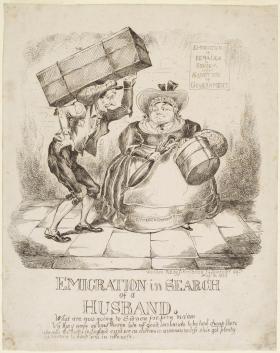
The voyage
Students read a diary transcript about the journey, examine a watercolour painting depicting a family on the deck of the ship, and view sketches of a passenger trying to dress on a rolling ship.
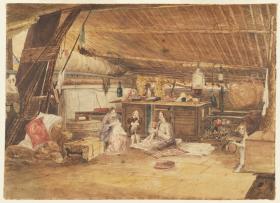
Sydney Cove
Students assume the perspective of a person arriving in Sydney Cove in 1853.
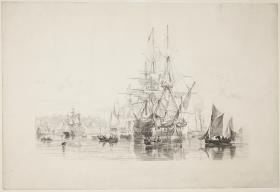
Immigrant barracks
Students investigate the history of the Hyde Park Barracks on Macquarie Street, Sydney.
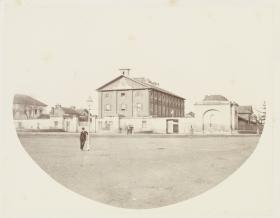
Caroline Chisholm
Students research the contribution Caroline Chisholm made to society through her work.
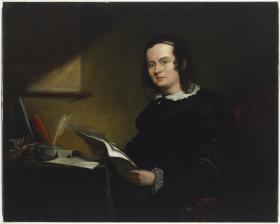
NSW Syllabus for the Australian Curriculum History K – 10
HT3-1 describes and explains the significance of people, groups, places and events to the development of Australia
HT3-2 describes and explains different experiences of people living in Australia over time
HT3-5 applies a variety of skills of historical inquiry and communication
The reasons people migrated to Australia from Europe and Asia, and the experiences and contributions of a particular migrant group within a colony. (ACHHK096)
Students:
- identify the European and Asian countries from which people migrated to Australia during the nineteenth century and reasons for their migration
- investigate the experiences of a particular migrant group and the contributions they made to society
Comprehension: chronology, terms and concepts
- sequence historical people and events (ACHHS098, ACHHS117)
- use historical terms and concepts (ACHHS099, ACHHS118)
Use of sources
- locate information related to inquiry questions in a range of sources (ACHHS102, ACHHS121)
- compare information from a range of sources (ACHHS103,, ACHHS122)
Explanation and communication
- develop historical texts, particularly narratives and descriptions, which incorporate source materials (ACHHS105, ACHHS124)
- use a range of communication forms (oral, graphic, written) and digital technologies (ACHHS106, ACHHS125)
Research
- identify and pose questions to inform an historical inquiry (ACHHS100, ACHH119)
- identify and locate a range of relevant sources to support a n historical inquiry (ACHHS101,ACHHS120)
Perspectives and interpretations
- identify points of view in the past and present (ACHHS104, ACHHS123)
Perspectives: people from the past will have different views and experiences
Empathetic understanding: an understanding of another’s point of view, way of life and decisions made in a different time
Learning across the curriculum
- Literacy
- Critical and creative thinking
What do we know about the lives of people in Australia's colonial past and how do we know?
How did an Australian colony develop over time and why?
What were significant events and who were the significant people that shaped Australian colonies?
Activity notes for teachers
The activities are designed to introduce students to a variety of image types as historical records of people, places and events in the past. Students use watercolour paintings, sketches and written sources to ask historical questions about the past.
Students examine images from the State Library of NSW to investigate the experiences of people who migrated to Australia is the 1800s during and after the journey.
Ask students to:
Analyse Sources 1 to 7 about immigration to Australia in the 1800s
Identify information in the sources that provides information about the life experiences of one person who migrated to Australia in the 1800s:
a. mother with small children
b. child
c. family – mother, father and children
d. single woman in search of a husband
e. skilled tradesman
f. gentleman with business interests
Assume the perspective on one of the people in the list above and write a story that describes:
a. the person’s experiences on the voyage to the colony
b. what happened to them once they arrived in the colony
Background notes for teachers
By the 1830s and 1840s Australia was receiving an increasing number of free settlers (as opposed to convicts) but there was still a huge labour shortage. People on farms needed labourers to clear the land, plant crops and take care of animals. The expanding settlement meant that convict labour was not sufficient. Employers were forced to increase the wages they offered to workers in order to compete for their labour.
The preferred solution was to encourage more free settlers. Convicts were seen as a bad moral influence and many people wanted the transportation system to stop rather than have more convicts in the workforce. However, a voyage to British North America or the United States of America was much more attractive to most British migrants. It was a shorter trip of twenty or more days compared to two or more months to get to Australia. Also, a ticket to Australia cost four times as much as a ticket to North America.
The Australian colonial government decided that the best way to encourage migrants to come here was to pay for the tickets of eligible applicants. Because unemployment was high in Britain many did choose to come, but it was not an easy voyage. The death rate of children on board migrant ships was high because of the cramped and unhealthy conditions. These people were not used to living, cooking and cleaning all together while being tossed by storms or baked in the heat.
Often when migrants finally arrived here they were taken advantage of by people who would rob them or take their money on pretence of getting them accommodation or employment. The situation was especially bad during the depression of the 1840s.
In 1838 Caroline Chisholm arrived in New South Wales with her husband and children. She soon became horrified by the desperate situation of single migrant women who were exploited when they first arrived. Caroline Chisholm decided to help them. She persuaded Governor Gipps to provide accommodation in a ‘Female Immigrants’ Home’. She then decided to organise appropriate work for these girls and started the first free employment agency.
Because potential employers in the bush found it difficult to come to the city, Caroline Chisholm took groups of women and girls by wagon and boat into country regions where they quickly found well-paid positions. By 1846, when she returned to England, she had helped eleven thousand people to find jobs or settle as farmers in New South Wales. In England she continued to publicise and work for improved emigration to Australia. She returned to Australia in 1854 and continued her philanthropic work, but due to ill health she left for England in 1866 and died there in 1877.
Resources
Other useful resources
- Judith Iltis, 'Chisholm, Caroline (1808–1877)', Australian Dictionary of Biography (online)